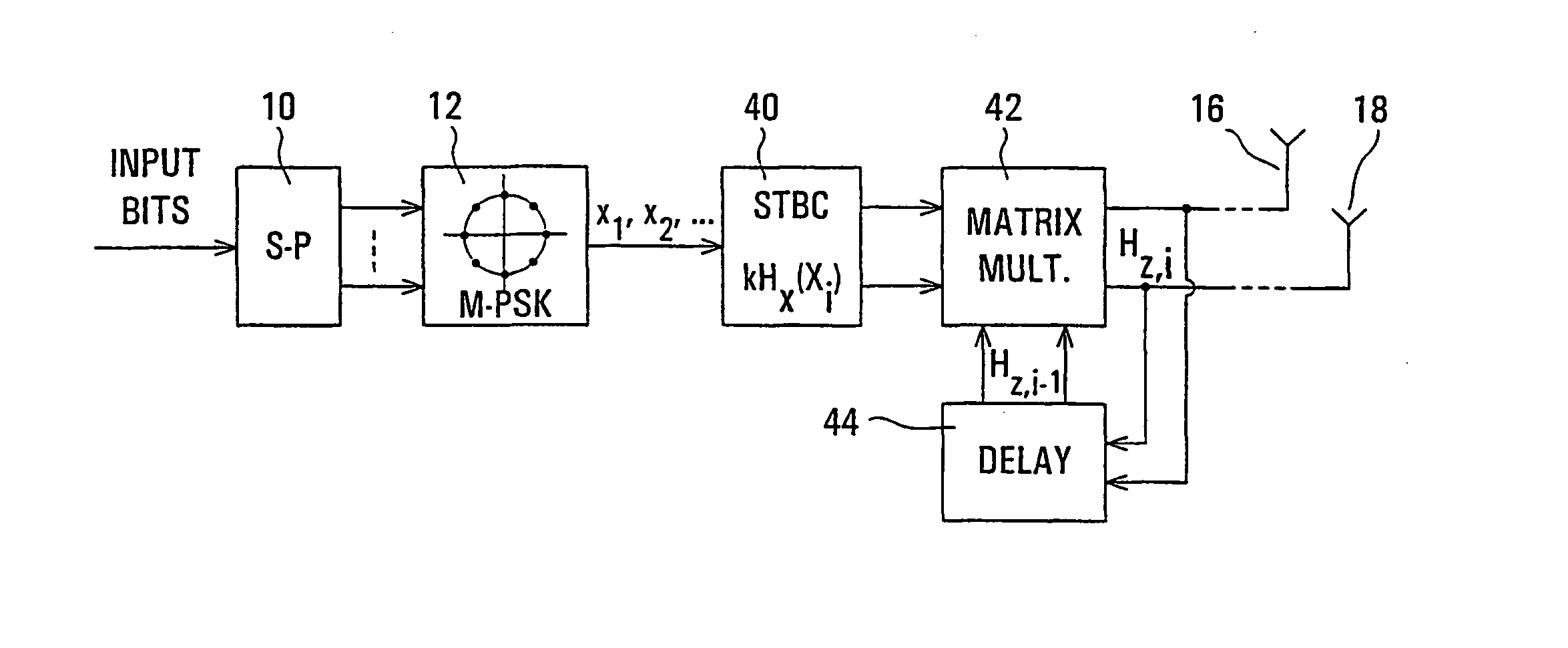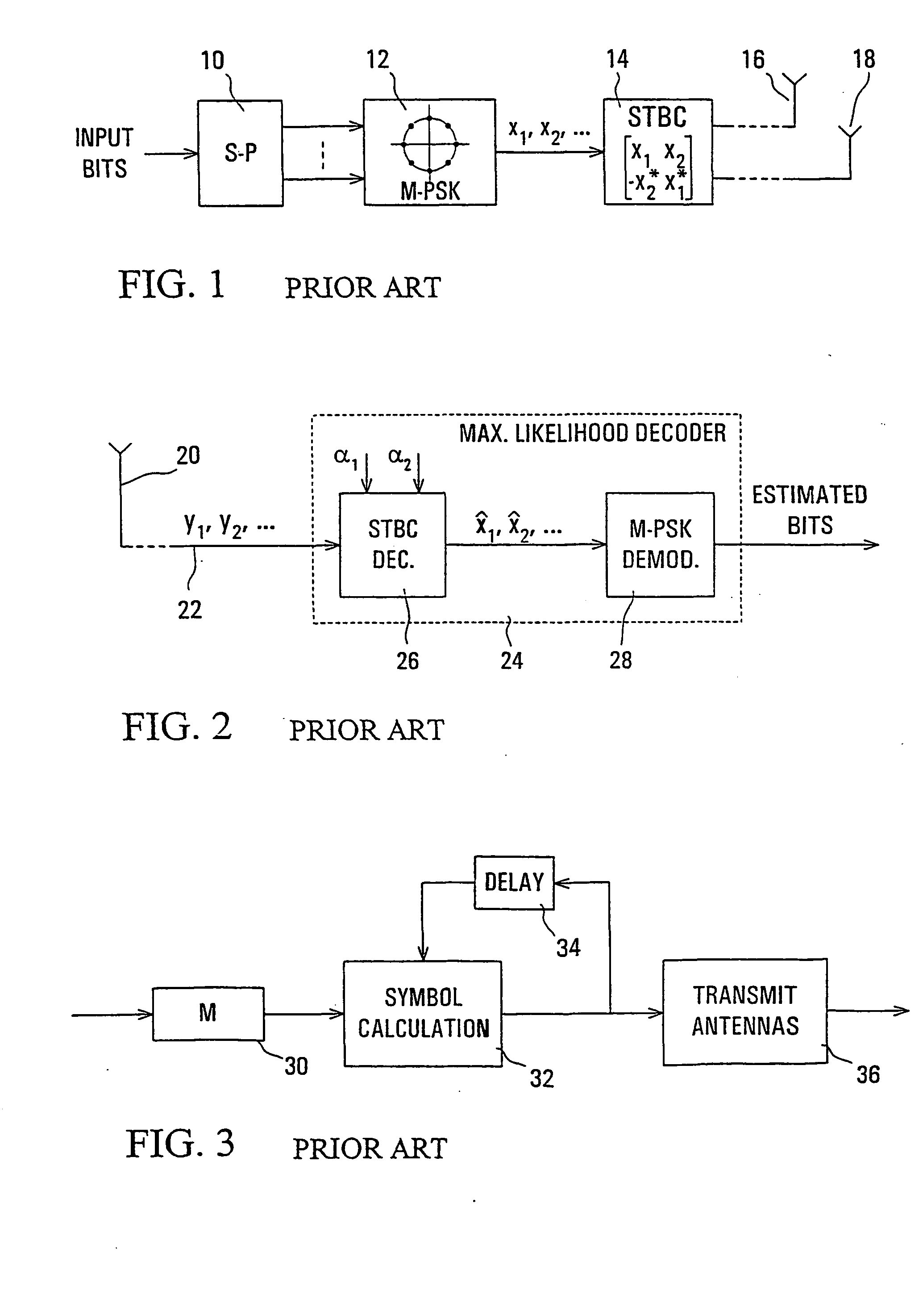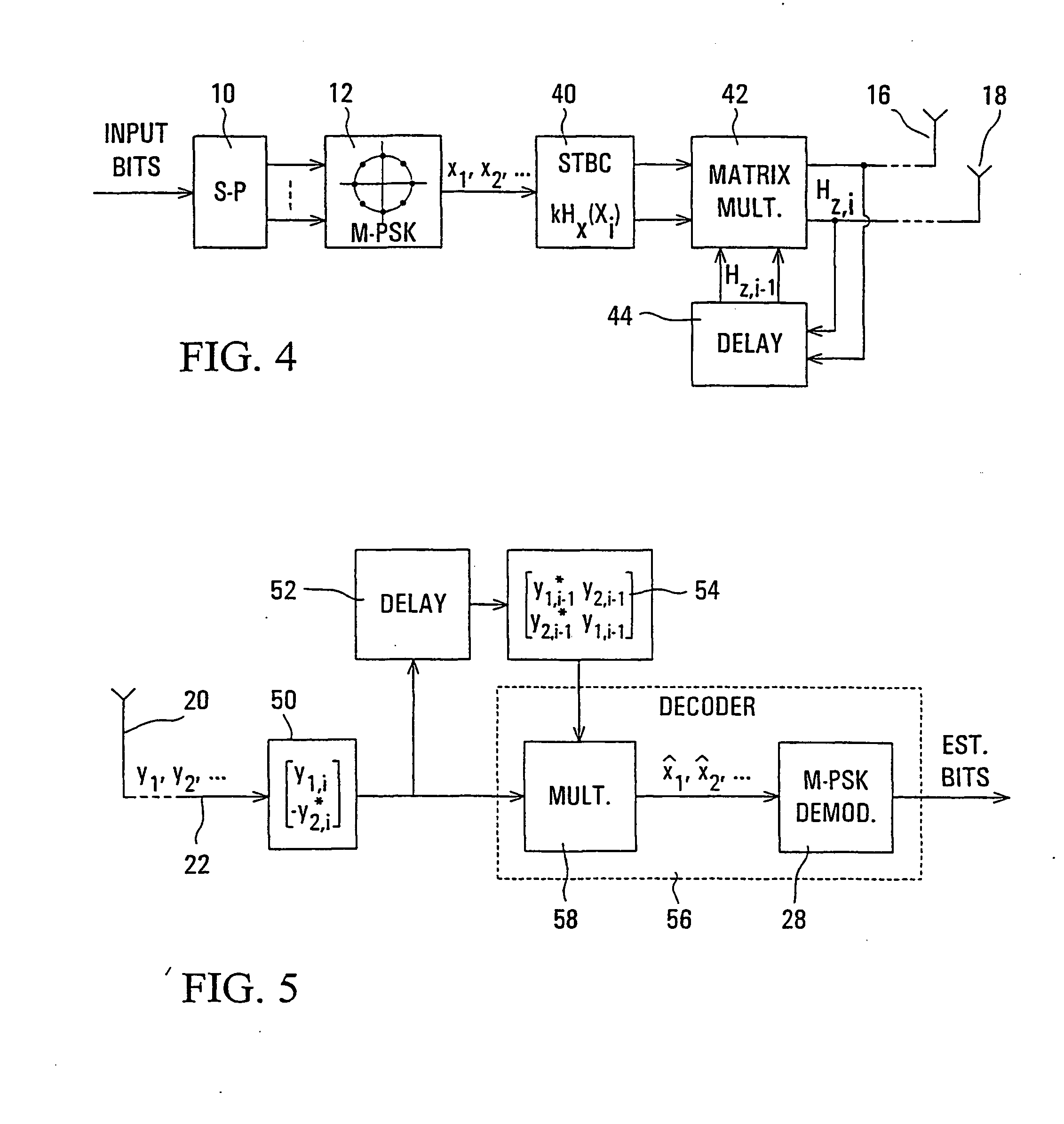Differential space-time block coding
a technology of space-time block and coding, applied in the direction of digital transmission, radio transmission, electrical equipment, etc., can solve the problems of difficult to increase the quality or decrease the effective error rate of multi-path fading channels, transmitter power or bandwidth, and the need to estimate the communication channels
- Summary
- Abstract
- Description
- Claims
- Application Information
AI Technical Summary
Benefits of technology
Problems solved by technology
Method used
Image
Examples
Embodiment Construction
Referring to the drawings, FIG. 1 illustrates parts of a known space-time block code (STBC) transmitter, and FIG. 2 illustrates parts of a corresponding known receiver. For simplicity and clarity, these and the other figures of the drawings show only those parts of the transmitter and receiver necessary for a full understanding of the prior art and embodiments of this invention, and the same references are used in different figures to denote similar elements.
The transmitter of FIG. 1 includes a serial-to-parallel (S—P) converter 10, an M-PSK (M-ary phase shift keying) modulator or mapping function 12, and a space-time block coder (STBC) 14 providing outputs, via transmitter functions such as up-converters and power amplifiers not shown but represented in FIG. 1 by dashed lines, to at least two antennas 16 and 18 which provide transmit diversity. The S—P converter 10 is supplied with input bits of information to be communicated and produces output bits on two or more parallel line...
PUM
 Login to View More
Login to View More Abstract
Description
Claims
Application Information
 Login to View More
Login to View More - R&D
- Intellectual Property
- Life Sciences
- Materials
- Tech Scout
- Unparalleled Data Quality
- Higher Quality Content
- 60% Fewer Hallucinations
Browse by: Latest US Patents, China's latest patents, Technical Efficacy Thesaurus, Application Domain, Technology Topic, Popular Technical Reports.
© 2025 PatSnap. All rights reserved.Legal|Privacy policy|Modern Slavery Act Transparency Statement|Sitemap|About US| Contact US: help@patsnap.com



